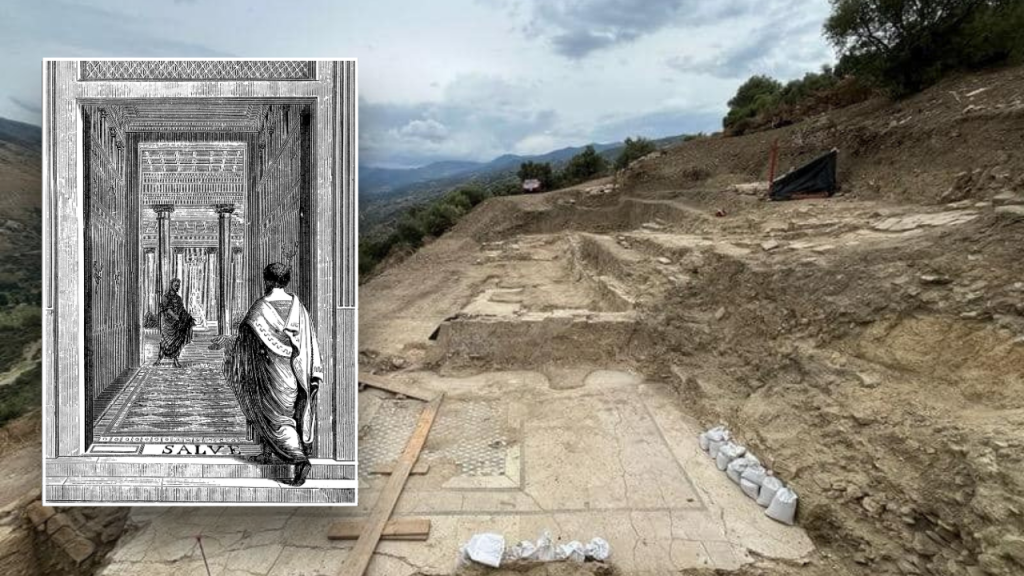Archaeologists from the University of Palermo recently discovered a unique ancient bathhouse hidden in the hills of Sicily. The thermal complex, which is one of the largest ever found on the island, was found at Halaesa, an archaeological site in northern Sicily. The structure spans over 8,600 square feet and boasts two rooms with mosaic floors and a courtyard with arched wings. The discovery also included new roads and a vast complex, shedding light on a previously unknown monumental structure in the area. The bathhouse’s decorative apparatus and size set it apart from others in Sicily, making it a significant find for archaeologists.
The bathhouse’s origins, whether Roman or Greek, remain uncertain due to the historical presence of both cultures in the area. Halaesa, part of Magna Graecia, was one of the first cities in Sicily to join the Roman Empire during the First Punic War in 263 B.C. The newly discovered monumental complex provides valuable insights into the urban layout of the Hellenistic and Roman city. Bathhouses played a crucial role in daily life in Ancient Rome and Greece, serving as places not only for hygiene but also for socialization and relaxation. The rich decorative features and extensive size of the bathhouse found in Halaesa make it a unique archaeological site on the island.
The Sicilian government praised the excavations for their contribution to understanding the history of Halaesa and the region as a whole. The discovery of the bathhouse and accompanying monumental complex has provided important clues about the city’s past, such as the layout of the roads and fortifications. The press release highlighted the significance of the bathhouse’s size and decorative elements, making it a standout structure on the island. With its mosaic floors and idyllic Mediterranean backdrop, the ancient bathhouse represents a valuable find for researchers studying ancient civilizations in southern Italy.
The newly unearthed bathhouse is just one of many ancient discoveries made in the past year. In addition to this finding, archaeologists announced the discovery of an ancient laundry room near the Vatican in June. These archaeological discoveries shed light on the daily lives and practices of ancient civilizations, offering glimpses into their hygiene, social activities, and architectural achievements. The uncovering of the bathhouse in Halaesa underscores the importance of such excavations in preserving and understanding the rich history of Sicily and its place in the broader context of Mediterranean civilizations.
Overall, the discovery of the ancient bathhouse in Sicily represents a significant contribution to archaeological research in the region. The structure’s size, decorative elements, and accompanying monumental complex provide valuable insights into the daily life and urban layout of Halaesa during the Hellenistic and Roman periods. With its mosaic floors and arched wings, the bathhouse offers a glimpse into the elaborate architecture and social practices of the ancient Greeks and Romans who inhabited the area. Such discoveries serve to enrich our understanding of ancient civilizations and showcase the enduring significance of archaeological excavations in preserving and commemorating the past.


